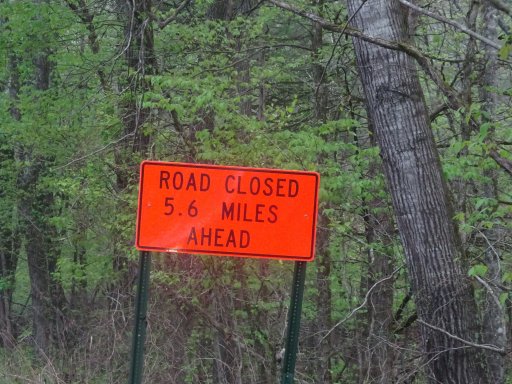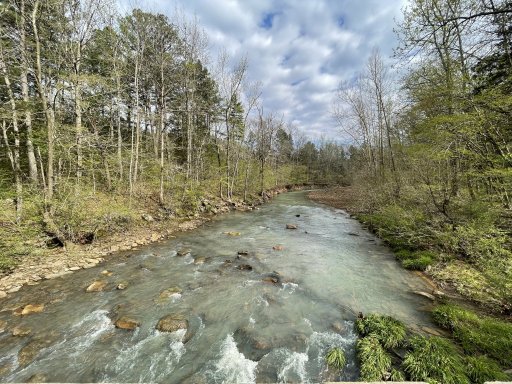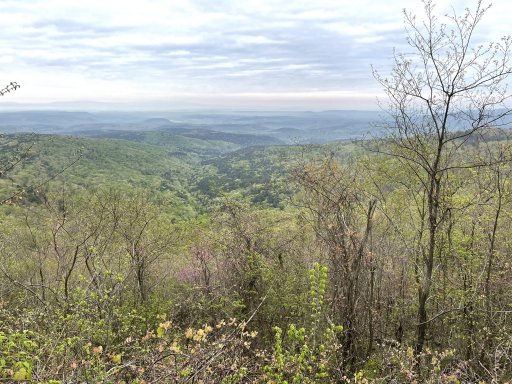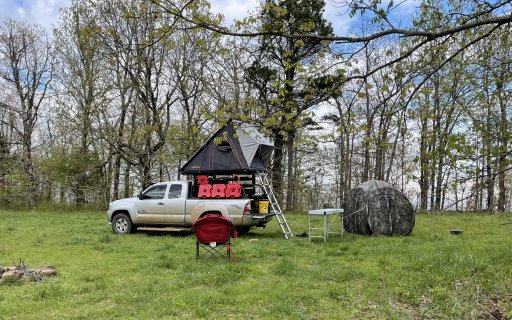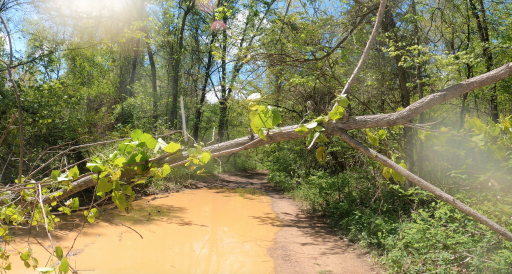@armyRN , I have a few questions that haven't been asked yet. (Unless I missed them) It would be good to set a policy now so we won't need to discuss on the trail.
- What will the procedure be if someone has a breakdown and needs a repair that can't be fixed same-day? Will the group wait for the repair or proceed on once the person is safely off the trail?
- If the weather turns rainy for days on end, do we keep to the trail in muddy conditions or bypass some parts that might be a bit slick?
- If we find that we have too many vehicles for a campsite, should we split up and find separate sites or move on until we find a site that will accommodate us all?
Thanks again for all of your planning!
Good questions! I will answer them all in a bit.
Background. In case you haven't figured it out yet, I put out some very specific... we'll call them "guidelines" (ok; they're rules and requirements). A couple reasons for them all:
1. To keep everyone together. Trying to herd kittens is difficult. Folks getting separated from the group and getting lost can almost be dangerous. I fall into the "start together, finish together" camp. There are always exceptions. But that's why there's hard specific "wheels turning" times. And convoy rules about keeping the vehicle behind you in sight, counting off before we leave, etc. We will never leave a vehicle on the trail unless it broke in half, caught on fire and is now just a molten pile of metal, or something weird like that
2. We'll be on the trail I'm guessing 4-5 weeks at least. Preventing vehicle breakdowns is paramount if you're going to complete the TAT. And I don't care how new or set-up your vehicle is, poop happens to the best of us (including me). So we can't be abusing our vehicles too much or risking damage (ok; we'll try to mitigate damage best we can). Speeds will be kept very reasonable too. Another reason for the requirement of tow points front-and-rear; if we need to tow someone to a repair facility (or get someone over/through an obstacle) we can. And full-size matching spare tires - probably one of the most common "issues" that happen on the trail is flat tires. Always remember, it could be you that has the breakdown, so we will work with the person who's broken to either get it fixed or to a place that can fix it. Oh; and it wouldn't hurt to find out what kind of U-joints your driveshaft(s) use, and grabbing a few spares (even cheap ones from Auto Zone or someplace like that).
If we do have to tow a vehicle off the trail, if the engine can at least be running, then it is much safer (you'll still have power brakes and power steering). I've yet to be in a situation (and I've been doing this for years) where we couldn't get the vehicle off the trail and at least on to pavement. Sometimes you've just got to get a little creative to do so.
So back to the questions:
1. What will the procedure be if someone has a breakdown and needs a repair that can't be fixed same-day? Will the group wait for the repair or proceed-on once the person is safely off the trail?
While it is case dependent, the goal is we all stay together till we get the vehicle to a place where it can be further assessed. And it depends on where we're at. Is it a broken water pump and we're near a town with an auto parts store? Then most likely we'll stay together and wait till the repair is done (even if it is a full day or overnight) - we should be able to replace a water pump (all hands on deck). On flat level ground we can tow a vehicle all day long to get it someplace. Is it a broken transmission that parts need to be ordered and it will be a few days? Now that probably means that person will be staying in town till it is fixed, and we'll keep moving on after making sure they're ok. Maybe they can take the highway and catch up with us later. Depending on where we're at, once we get to a town, the vehicle may still need to be towed to a dealership.
2. If the weather turns rainy for days on end, do we keep to the trail in muddy conditions or bypass some parts that might be a bit slick?
Depends on how muddy the trail is. Is it "dangerous" muddy (vehicles are at risk of damage), or we're just getting filthy dirty. I know early on (day one) there's a bypass around a muddy section/mud hole, and I plan on us taking the bypass. I don't want to play submarine either. But if it is just rainy and muddy, my plan is to keep going, and eventually the rain will stop, we'll get to a town with motels and a car wash and restaurants. And since I know everyone will have tow points front and rear (and tow straps), and some of us have winches, we'll get everyone through. Bring raingear to wear.
3. If we find that we have too many vehicles for a campsite, should we split up and find separate sites or move on until we find a site that will accommodate us all?
That is a possibility. It will be taken on a case-by-case basis. Nobody is to just go off on their own. We'll have plenty of folks with apps showing camping areas, so how close are the other camping areas? Ideally, there will be campsites along the trail where we can have three vehicles camp here, then a half mile down the road another couple vehicles camp, etc. Then in the morning the first group that stopped leaves at a designated time, and the ones further up the line are ready to roll when they come by till we're all back in line. But that requires good communication (which I think we'll be able to do). Part of this adventure is the unknown, and thinking on the fly. But we also can't just scatter. I'd rather us be tightly packed into an area and all be together than be all spread out too far.
Hint: Part of leading and being part of a group like this... is sometimes you're making things up as you go along. We can't anticipate every possible scenario and setting (although I do like to play "what-if" mental games), but we can have guidelines that help us with our decision making.
Does that answer your questions?




